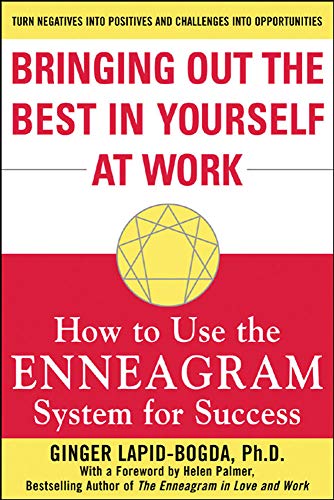
Enneagram
The Enneagram is a complex system that breaks down the core fears and motivations of nine personality types. The system is made up of a nine-point diagram that showcases the types. Each of the nine types are split into three centers of intelligence: the instinctive, the feeling, and the thinking centers. Types 8,9, and 1 are a part of the instinctive center; they have gifts and issues revolving around activity and passivity. Types 2,3, and 4 are a part of the feeling center; they have gits and issues involving their emotionality and self-worth. Finally, types 5, 6, and 7 are a part of the thinking center; they have gifts and issues involving their analysis and reason.
Bringing Out the Best in Everyone You Coach: Use the Enneagram System for Exceptional Results
Bringing Out the Best in Everyone You Coach is a unique guide that acts as a mentor for someone who’s interested in the Enneagram. This self-help guide helps its readers determine their type. When readers determine their type, the book gives you mental health and communication tips. For example, thinking center types can clear their mind by using strategies from the instinctive center. In fact, Ginger Lapid-Bogda’s book can also be used to better the workplace.
The Enneagram Business states Ginger Lapid-Bogda is, “An internationally recognized Enneagram author, trainer, keynote speaker, OD consultant and coach, Ginger is considered a world leader in bringing the insights of the Enneagram to organizations across the globe.” Bringing Out the Best in Everyone explores the nine personality types on a substantially deeper level. Lapid-Bogda explains each of the types have different defense mechanisms that come out during stress.
Defense Mechanisms
For instance, type twos often find themselves in the helper position. They tend to deny their own needs and focus on the desires of others as a way to gain people’s approval. Their defense mechanism is repression, and that means they don’t tend to fully acknowledge their negative emotions. An example of this could be a type two knowing someone hurt them in the past, continues to talk to the same person. This creates resentment but since they don’t want to appear selfish they try their best to win over that person’s approval.
Growth and Stress Points
She even goes deeper into the power of growth and stress points. Lapid-Bogda offers a unique point of view on this concept. Type sevens are often optimistic and extroverted people, but they have a hard time living in the moment because of over-stimulation. When they finally learn to relax and take things in, they act like a healthy five.
Healthy fives are deep, analytical, and calm. They’re able to take in the world the way it is. When sevens are going through difficult situations, they can act like ones. Sevens are idea-implementers and if they can’t get their ideas out, they can become judgemental and impatient like an unhealthy one. She argues if we stay in both for long, we can learn from each type. If we stay in our growth arrow for too long we can almost get too comfortable. If we stay in our stress point for a while, we can really grow from life’s challenges.
Using the Enneagram for the Workplace
What makes the book most effective is its direction. Bogda explains how certain types can positively influence the workplace, but also how they can leave a negative impact. Each personality style was developed a certain way during childhood and using techniques and self-reflection can really improve leadership qualities for any type.












